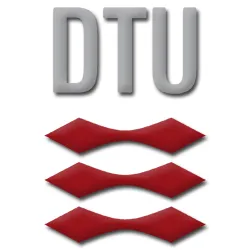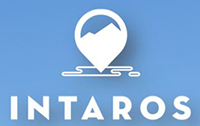
The Technical University of Denmark (DTU) is a leading technical university in northern Europe consisting of 19 institutes covering a wide variety of scientific fields, with a total staff of about 6000, 10000 undergraduate students enrolled, and 1200 Ph.D. students. Two institutes from DTU participates in the proposal, DTU Space and DTU Aqua. DTU Aqua has a permanent staff of 215 persons and conducts research and advices on matters of fisheries, fisheries management, aquaculture, and the marine environment. The institution carries out research, investigations and education concerning sustainable exploitation of living marine and fresh water resources. DTU Aqua deals with considerations regarding the whole chain from water to table. This includes interaction between the aquatic environment, productivity and variation in fish stocks, methods for stock assessment, development of methods for sustainable fisheries management, and stock enhancement. DTU Aqua deals with considerations regarding the whole chain from water to table. This includes interaction between the aquatic environment, productivity and variation in fish stocks, methods for stock assessment, development of methods for sustainable fisheries management, and socioeconomic aspects. DTU Aqua is strongly involved in arctic marine research, both field work and analytical, as well as advice giving in relation to arctic ecosystems through its collaboration with GINR. DTU Aqua’s experience in developing ecosystem models goes back to the first North Sea model and since then the institute has been influential on stochastic as well as deterministic ecosystem models, e.g. state space models, size spectrum models and end-to-end models, and has a broad experience with the challenges of ecosystem model coupling. DTU Aqua is deeply involved in the work of ICES, transforming knowledge into advice, and facilitating science-based decision-making by interacting with stakeholders with very diverse backgrounds.
DTU Space, the National Space Institute at DTU is the national institute for space-related activities in Denmark. The institute conducts research in astrophysics, solar system physics, geodesy, remote sensing, space instrumentation and space technology. DTU Space has significant activities within the areas of Earth Observation and Arctic Studies. Main application areas are sea level, sea ice, land ice, geodesy, and oceanography. DTU Space operates permanent GPS-stations and tide gauges in Greenland. As part of the geodetic activities in Greenland, DTU Space has been pioneering the use of GPS for monitoring the ice sheet mass changes. In the frame of the US NSF funded project GNET both its value and its consistency with GRACE was further demonstrated. DTU Space has participated in numerous EU and ESA projects on the developments of services on the enhancement of satellite based sea level data and compilation and analysis of climate sea level records. Recently, in the EU FP-7 funded project LOTUS a special effort in preparing the use and take-up of Sentinel-3 SAR altimetry in the Polar oceans has been made. Also, DTU Space has participated in the ESA project SAMOSA (Development of SAR Altimetry Mode Studies and Applications over Ocean, Coastal Zones and Inland Waters) and CP4O (CryoSat Plus for Oceans).
Role in the project
DTU Space will contribute in the fields of Cryosphere and Oceanography, mainly in WP2. Within Cryosphere, DTU Space will integrate GPS station in Greenland and the associated modeling of ice sheet mass changes, also integrating GRACE. Within Oceanography, DTU Space will develop further the monitoring of sea level in the Arctic region using satellite altimetry and tide gauges. DTU Aqua will mainly be involved in WP6, contributing to the work on local and regional ecosystem models in the Baffin Bay, focusing on issues of data assimilation and potentially effects of higher trophic levels and fishing, based on experiences with the Atlantis model.
Technical University of Denmark
Anker Engelunds Vej 1
Building 101A 2800
Kgs. Lyngby
Denmark
